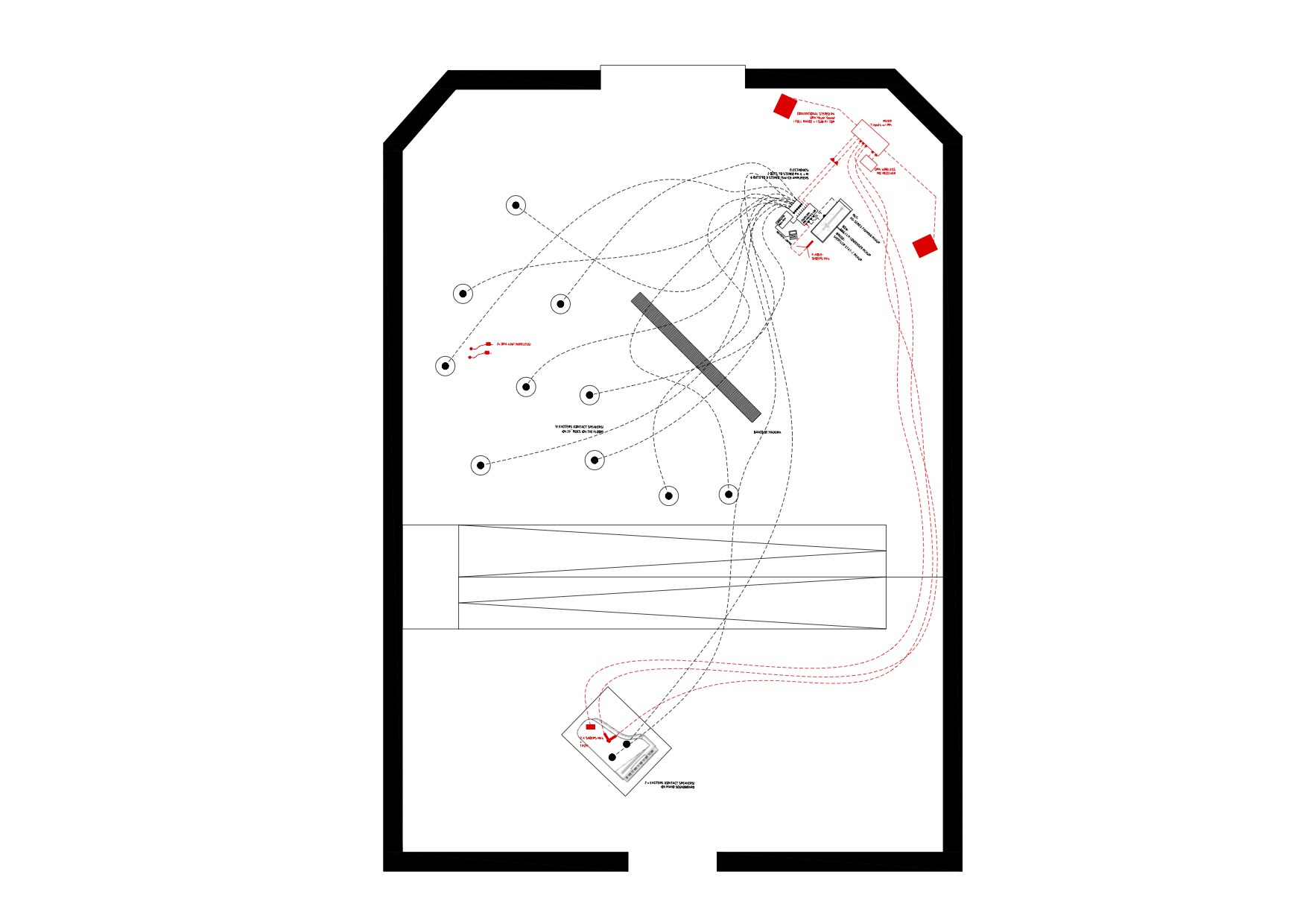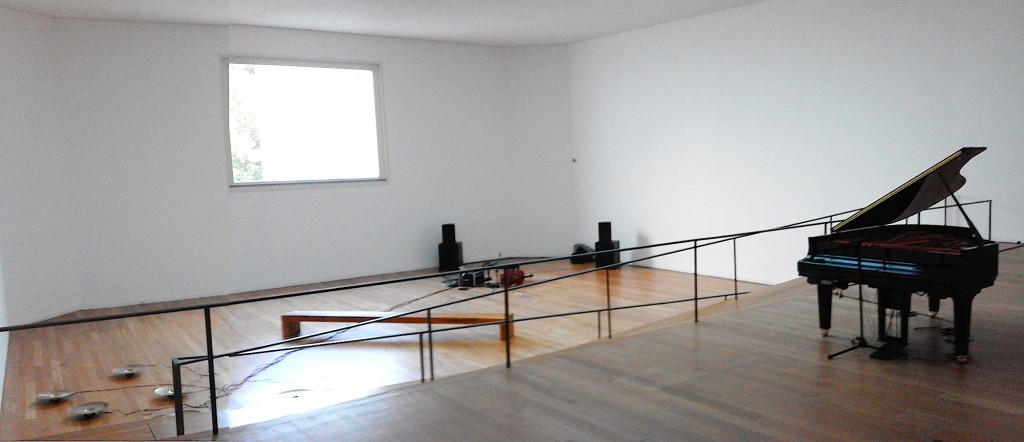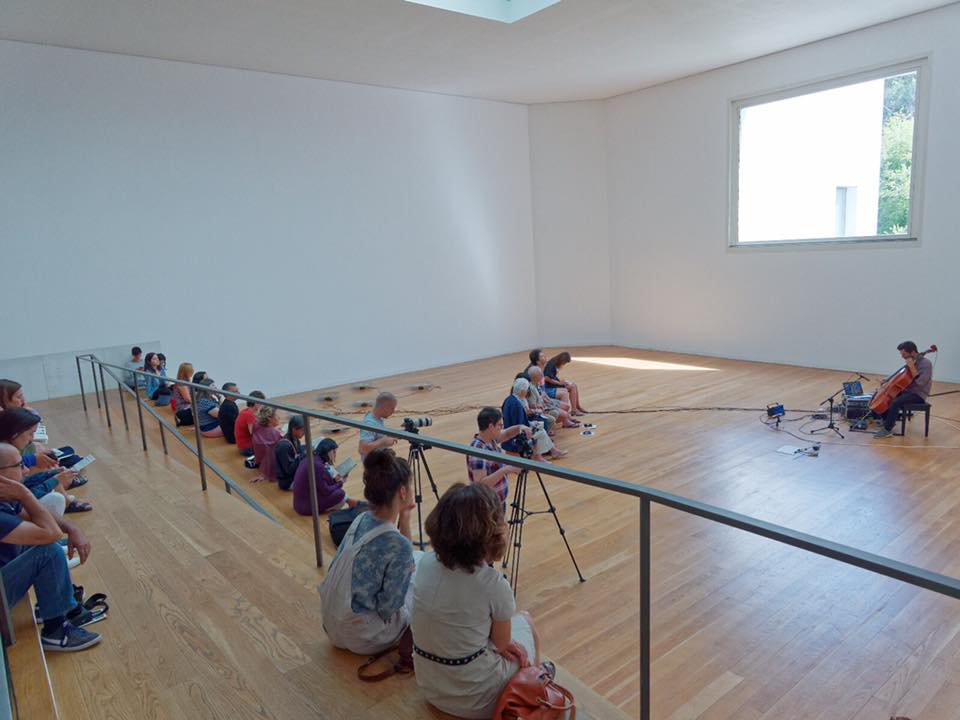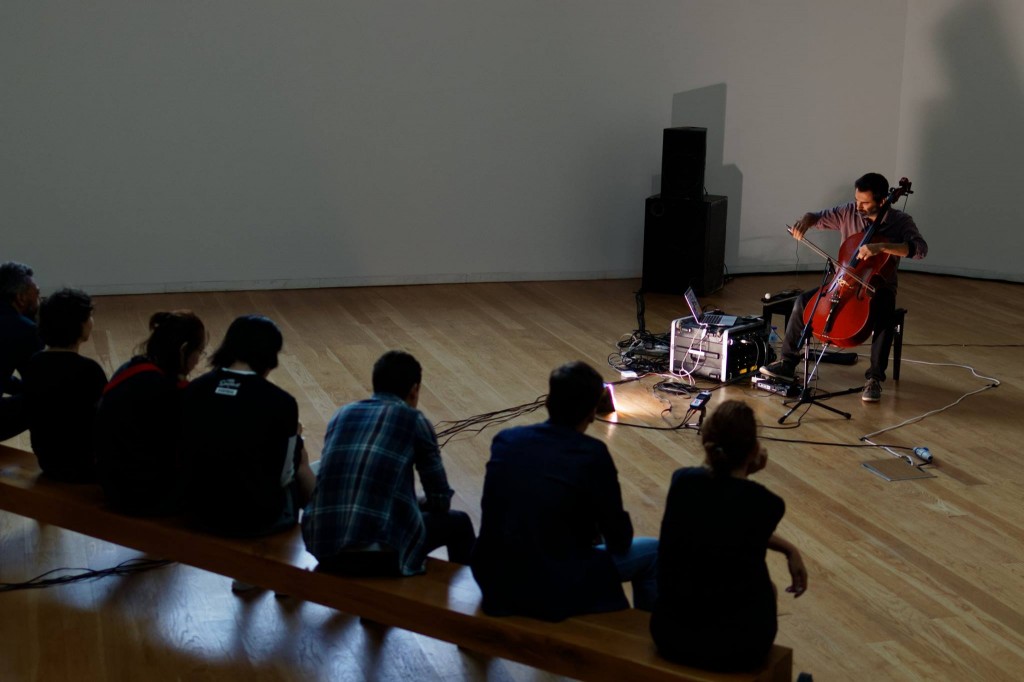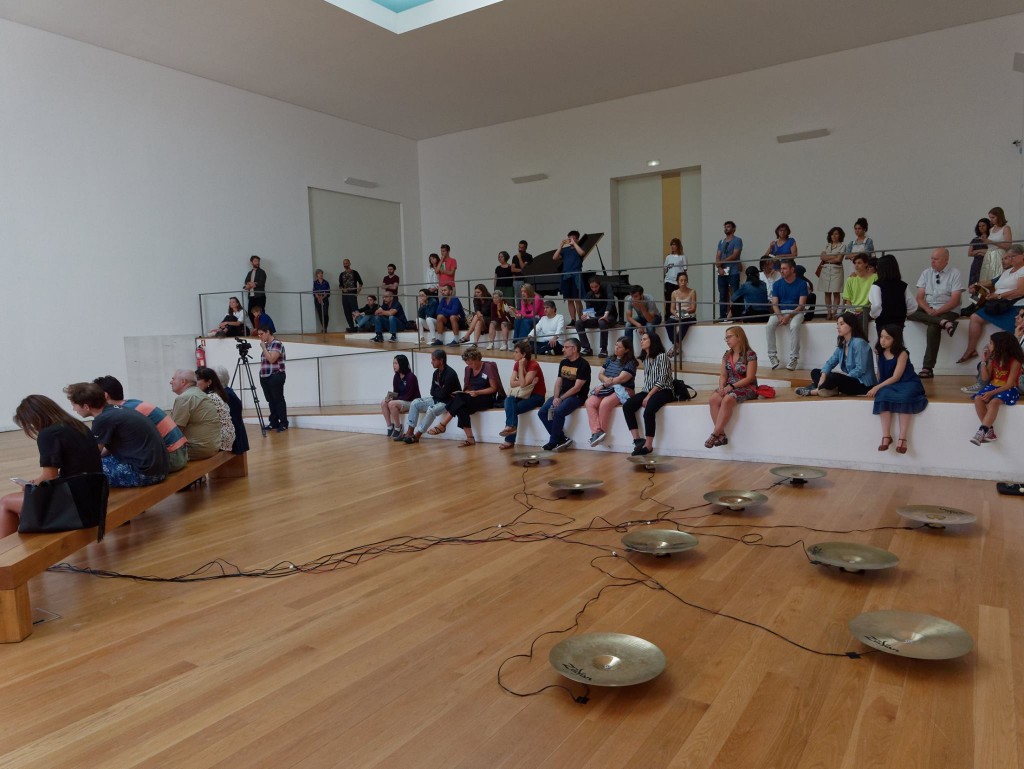MEDUSA
Concert-Installation for: CELLO, ELECTRONICS, CYMBALS AND PIANO
Location: MUSEU DE SERRALVES / PORTO
Date: SEP 9TH 2017
Event: MUSEUM AS PERFORMANCE 2017
Figure x: Diagram for spatial structure and device setup
The room where the project took place presents itself as a symmetrical container which is drastically transformed by the ramp that divides it between an upper and a lower floor. This room was baptized as The Swimming Pool. This ramp introduces very clearly a promenade architectural in the experience of a squared big white room. These characteristics where taken into account when positioning the different objects in the room and building the installation narrative.
The resonant objects used were musical instruments (cymbals and piano). These adding their resonance to the natural reverberation and resonances of the room. The cello occupied the timbral character of the different resonators and its multifonic character. The grand piano received the audience in the upper floor. In the middle of the ramp the audience had a bird´s eye view on the cymbals changing the sonic perspective. A large bench was placed facing the cello and the stereo PA for a closer positioning to the main source leaving the resonators on their back.
This occupation of space took into direct consideration the movement of the audience in the museum room and the performance space positioning.
Figure x: Temporal macrostructure
The concert-installation was divided in 3 cycles of around 20´performance and 1.30h installation. Each performance developed from the sonic material of the previous installation period. The piece started in silence and from there the first cycle was performed. Each 1.30h of installation had a different approach, installing a different ambient in the room. Each new cycle developed from the qualities of the previous “suspension” period.
cycle 1 (opening)
suspension 1: granular
(transition) : cymbals
cycle 2
suspension 2: drone
(transition): cello + drone
cycle 3 (closing)
The resonant objects were highly susceptible to tonal excitation. Both the cymbals and piano have a sympathetic resonance with melodic development of the improvisation. The changes from the direct resonance in the external objects to the use of Pan Delay was very organic during the improvisation. The simple use of the expression pedal helped develop the articulation between the spatialization system and the cello performance. In this iteration this feature was particularly explored. The overall composition structure of 3 cycles with intervals of installation was an integral part of the overall piece development influencing the short improvisations.
CYCLE I
CYCLE II
CYCLE III


